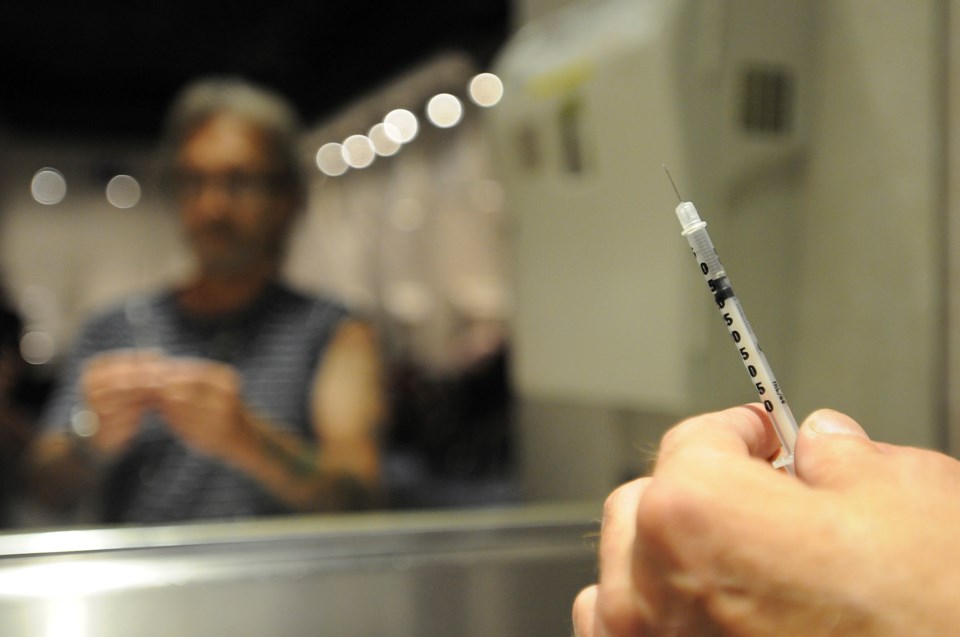If ever there were a political minefield in this city, it is the Downtown Eastside.
As long as I’ve been reporting about the good and the bad of the community, opposing views from politicians, poverty activists, health care people, cops, non-profit employees and anybody with an opinion persist on all the important issues: drug addiction, mental health, housing, development, policing, etc.
It’s just the way it is, the way it’s always been.
So, no doubt, Vancouver Coastal Health’s announcement Sept. 3 that it is restructuring health services in the Downtown Eastside will be criticized or embraced, depending which side of the fence people do their finger pointing from.
Before I get to explaining some of the changes, let me tell you how much this “second generation strategy” will cost. Apparently, the $55 million for programs and services in the Downtown Eastside will remain unchanged.
Which is good news, right?
But is it good news if new programs and services will be paid for — as the health authority’s press release puts it — by “reallocating resources”? That phrase, as many readers will attest, has become commonplace and a sad reality in business these days.
Yep, do more with less.
What it means in this case is that existing contracts from non-profits and others who do not have “a clear health mandate or those offering stand-alone services without formal connections to health care services may not be renewed.”
As one long-time non-profit manager concluded in an email to me, “cuts and more services run by bureaucrats.” The health authority would not be surprised by such criticism and anticipated the pushback in preparing its media strategy.
Here’s what Dr. Patricia Daly, VCH’s chief medical health officer, said in the health authority’s release: “We know not everyone will agree with the changes being made, but as health care providers we know that services in the Downtown Eastside can be improved — and it’s our responsibility to ensure that people in this area receive the type of care that will improve population health.”
Her comments were supported by Dr. Julio Montaner, director of the B.C. Centre for Excellence in HIV/AIDS (“This will result in improved quality of life…”) and Vision Coun. Kerry Jang, who is also a professor of psychiatry at the University of B.C. (“These improvements are long overdue…”).
So what does this strategy look like?
The breakdown of what’s to come is written in a language only a bureaucrat could fully understand. So I’ll do my best to interpret. My words are in parentheses. Here we go:
- A new mental health and addiction drop-in model with stronger connections to health services. (Use drop-in centres more effectively, so people truly get hooked up with the health care they need.)
- A new low-threshold addictions service that removes obstacles to treatment and provides untreated people with a range of medical addiction therapies. (Located in the same building as the B.C. Centre of Excellence in HIV/AIDS on Powell Street, doctors and pharmacists will confer as needed with up to 200 addicts to prescribe and dispense medications and monitor treatment.)
- A new peer navigation program that employs people with lived experience to help others access services and supports. (Essentially, do more of what already exists at many agencies, where people having gone through severe addictions and mental health issues counsel those needing support and treatment.)
- New hours for the Insite supervised drug injection site. (Change hours from the current 10 a.m. to 4 a.m. to 9 a.m. to 3 a.m., a move that answers calls from addicts to open the facility earlier in the morning.)
- Shelter pilot to improve transitions from acute care. (Set up at least 10 shelter beds at non-profits so that homeless people being discharged from hospital have a place to stay.)
So what do you think, people?
I’m sure many of you have opinions.
I’d be shocked if you didn’t.
mhowell@vancourier.com
@Howellings



